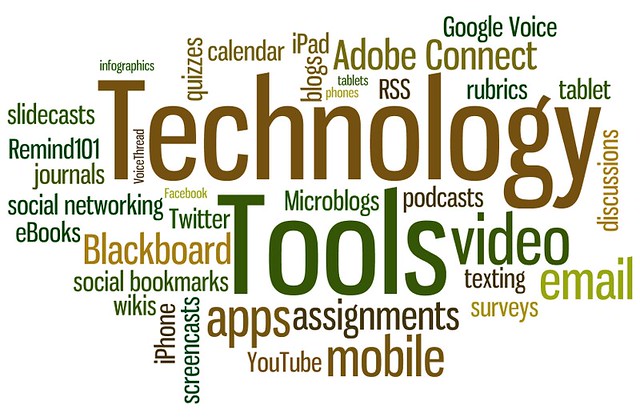 The NMC Horizon Report > 2014 Higher Education Edition is a collaborative effort between the NMC and the EDUCAUSE Learning Initiative (ELI). This eleventh edition describes annual findings from the NMC Horizon Project, an ongoing research project designed to identify and describe emerging technologies likely to have an impact on learning, teaching, and creative inquiry in education. Six key trends, six significant challenges, and six emerging technologies are identified across three adoption horizons over the next one to five years, giving campus leaders and practitioners a valuable guide for strategic technology planning. The format of the report is new this year, providing these leaders with more in-depth insight into how the trends and challenges are accelerating and impeding the adoption of educational technology, along with their implications for policy, leadership and practice. View the work that produced the report at www.horizon.wiki.nmc.org.
The NMC Horizon Report > 2014 Higher Education Edition is a collaborative effort between the NMC and the EDUCAUSE Learning Initiative (ELI). This eleventh edition describes annual findings from the NMC Horizon Project, an ongoing research project designed to identify and describe emerging technologies likely to have an impact on learning, teaching, and creative inquiry in education. Six key trends, six significant challenges, and six emerging technologies are identified across three adoption horizons over the next one to five years, giving campus leaders and practitioners a valuable guide for strategic technology planning. The format of the report is new this year, providing these leaders with more in-depth insight into how the trends and challenges are accelerating and impeding the adoption of educational technology, along with their implications for policy, leadership and practice. View the work that produced the report at www.horizon.wiki.nmc.org.
NMC Horizon Report > 2014 Higher Education Edition
7 Steps for Choosing the Best Technology Tools for Your Teaching

In the decade now that I have spent supporting educators in the endeavors to teach using technology, I have lost count of the number of times I’ve been asked by faculty for advice on how to choose the best technology tools for their teaching. With the seemingly endless selection of technology tools available, how do educators choose the right technology tools to incorporate into their teaching? If you are in the situation of considering a new technology tool in your teaching, here are 7 steps to take as you choose which tool may be best for you:
Step 1: Start with your objectives
It’s important to always start any conversation about technology selection with objectives. What is it that you and/or your students should be able to do? There are some great models available, such as Digital Bloom’s Taxonomy and SAMR, that can offer guidance as your craft and/or revise objectives that will form the basis for any decisions regarding technology decisions. Are you seeking to substitute, augment, modify, or redefine an existing teaching or learning activity? Make sure that it is clear from reviewing your objectives what your intended goals are.
Step 2: Survey your “tech landscape”
Once you have your goals and objectives clearly in mind, the next step is to take an inventory of your current technology use as well as look at your environment for incorporating the new technology. What tools are you and/or your students already using? What are you comfortable with? What is working? Keep in mind the adaage, “If it’s not broke, don’t fix it” and don’t discard an existing technology if it is the meeting your needs. What tools are already at your fingertips and/or perhaps provided/supported by your institution? What tools are frowned upon and/or blocked at your institution?
Step 3: Set your budget
How much are you and/or your students willing to spend on a tool? Do you need to stick with a free solution? Or, are you able to spend some money? Many tools take a “freemium” approach, meaning that they are available for use on a limited basis for free with additional features available for a fee.
Step 4: Sample available tools
Pick a few (5 or less) available options and try the tools yourself to see which you and/or your students like best, are easiest to use, and meet your needs. What are the pros & cons of each? What support is available? How does each integrate into the existing workflow and/or lesson?
Step 5: Select your tool
Eventually, you finally need to take the plunge and pick a tool to use. Don’t worry..you aren’t stuck using the tool forever 🙂 If you eventually change your mind down the road, you can always change the tool.
Step 6: Set parameters for use
Clarify for yourself and/or your students how the tool will and won’t be used. It’s at this point you may want to revisit your objectives to ensure that your plan for use meets your stated learning objectives. Are you using the right tool for the right problem?
Step 7: Scrutinize your choice
After you’ve thoroughly used the tool for a specified period of time (term, semester, etc.) reflect on your use of the tool? Did it meet your needs? What unexpected issues did you and/or your students encounter? Is it working well enough that you want to stick with it, or is it time to try something else? You’re not locked-in to continuing to use the tool if it isn’t meeting your needs.
There you have it…a seven-step approach to selecting a technology tool for your teaching. Leave a comment if you found these steps helpful or if you perhaps have additional suggestions to share with educators as they choose technology tools.
Envisioning the Future of Education Technology
What technology will we be using in the classroom 3, 5, or 10 years or more from now? This visualization attempts to organizing a series of emerging technologies that are likely to influence education in the coming decades.

Click here for enlarged version. Courtesy Edudemic

